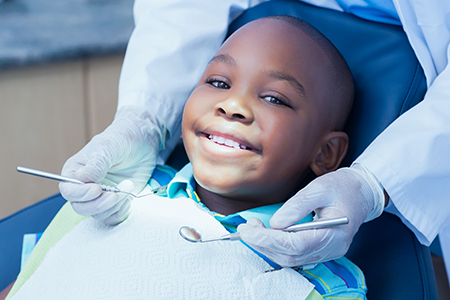At the office of Edward J. Sharkey, DMD, the health, comfort, and development of your child's smile guide everything we do. Pediatric dentistry is about more than cleanings and checkups — it's about building confident, healthy routines that support lifelong oral wellness while making dental visits calm and constructive for both children and parents.

Establishing strong habits early gives children an enormous advantage. Simple daily practices — proper tooth brushing, appropriate use of fluoride, and consistent bedtime routines that avoid sugary drinks — reduce decay risk and create predictable rituals that children come to expect and accept. Our approach focuses on coaching parents and children together so healthy behaviors stick.
Prevention is the foundation of pediatric care. We emphasize age-appropriate techniques for brushing and flossing, and we show children how dental visits can be a positive part of growing up. When children associate dental care with safety and kindness, they are more likely to cooperate and adopt routines that protect teeth and gums through adolescence and beyond.
We also watch for early signs of issues that can complicate development. Interceptive care — spotting and responding to bite problems, harmful habits, or early decay — allows us to intervene when treatment is simplest and most effective. That vigilance preserves function, appearance, and self-esteem as your child matures.

Regular appointments are more than quick checklists. Each visit begins with a conversation about your child’s health and habits, followed by a careful visual and tactile exam of the teeth, gums, and oral tissues. We assess development, check for early signs of decay, and evaluate how the jaws and bite are forming so we can recommend timely steps when needed.
Professional cleanings remove plaque and buildup from places a child’s brush may miss, and they’re also an opportunity to reinforce home care. We use modern digital radiography selectively to look beneath the surface when needed, minimizing radiation exposure while giving us the detail required to detect hidden problems and monitor eruptions.
Education is a core part of the appointment. We provide clear, practical advice on daily care, help set realistic goals, and demonstrate techniques that make brushing and flossing easier for busy families. Our goal is to leave families with a plan that’s simple to follow between visits.
Consistent dental exams let us track facial growth and tooth development so we can identify deviations early. Early detection of alignment issues, uneven wear, or bite discrepancies gives families more options for conservative, minimally invasive care. In many cases, simpler measures taken at the right time prevent more complex treatment later on.
During exams we evaluate jaw alignment and muscle function as well as the position of developing permanent teeth. This comprehensive approach helps us determine if an orthodontic consultation would be beneficial, and it lets us coordinate care with specialists when that will improve long-term outcomes for your child.
We also tailor recommendations based on activity level. For children involved in contact sports, properly fitted mouthguards are a highly effective way to prevent dental trauma and protect developing dentition. Advising families about protective gear and safe practices is part of our standard preventive work.
Tooth decay remains a common pediatric issue, but it can be managed and often prevented with consistent habits and timely professional care. Decay occurs when plaque-producing bacteria interact with sugars from food and drink; that’s why daily plaque removal and sensible snacking are so important. Simple changes at home have a big impact.
In-office preventive measures like topical fluoride and sealants provide additional protection, especially once permanent molars erupt. Fluoride strengthens enamel and makes teeth more resistant to decay, and sealants create a barrier over grooves and pits where brushing can’t always reach. We recommend these treatments selectively, based on each child’s risk profile.
When cavities are detected, our team focuses on conservative repair to preserve tooth structure and comfort. Restorative care in children emphasizes durability and minimal invasiveness, combined with steps to reduce fear and build trust — because a positive early experience greatly reduces anxiety about future care.
Start dental care early: establish a brushing routine as soon as teeth appear.
Use age-appropriate brushes and a smear or pea-sized amount of fluoride toothpaste when recommended.
Avoid letting babies fall asleep with bottles containing milk or juice; when needed, replace with water.
Bring children in for routine checkups and cleanings on the schedule we recommend.
Model good habits: brush and floss together and make oral care a normal part of daily life.
Choose healthy snacks and limit sugary drinks; encourage water throughout the day.
Discourage prolonged pacifier use and provide gentle guidance for stopping thumb or finger sucking at the right time.
Use a properly fitted mouthguard for sports to reduce the risk of dental injuries.

Baby teeth play an essential role in speech, nutrition, and creating space for permanent teeth. Because tooth development begins before birth, early attention is important. The American Dental Association and the American Academy of Pediatric Dentistry recommend a first dental visit around the first birthday — an opportunity to answer questions, review feeding habits, and outline gentle care strategies.
Cleaning a baby’s gums with a soft cloth and transitioning to a soft-bristled brush when the first tooth appears are simple steps that set the tone for lifelong care. We guide parents through teething concerns and safe ways to soothe discomfort, and we help families recognize signs that merit an earlier evaluation.
Preventive counseling in this stage focuses on feeding routines, appropriate fluoride use, and avoiding prolonged exposure to sugars. These early choices can profoundly influence oral health and reduce the need for restorative treatment as children grow.
Many children arrive with curiosity, while some bring anxiety. We prioritize creating a calm, predictable environment where explanations match a child’s age and developmental level. Staff are trained to use child-friendly language, positive reinforcement, and stepwise introductions to instruments so visits are both educational and reassuring.
When medical conditions, developmental differences, or intense fear make standard care challenging, we discuss tailored options to ensure safe, effective treatment. Our aim is to build trust so children leave feeling empowered rather than frightened — a foundation that makes future care smoother and more cooperative.
Parents play a central role in shaping a child’s dental experience. We offer guidance on how to prepare children for visits and how to respond to behaviors in ways that support resilience and reduce stress for the whole family.
As children move through school years, their oral needs change rapidly. Permanent teeth come in, chewing forces increase, and social concerns about appearance can emerge. Routine exams monitor eruption patterns, tooth alignment, and oral hygiene effectiveness so we can recommend interventions that keep growth on a healthy trajectory.
Orthodontic issues are often identified during these years. Early referral to an orthodontic specialist can be advantageous when growth modification or early treatment improves long-term results. We work collaboratively with specialists to coordinate timing and ensure that dental hygiene remains a priority during orthodontic care.
Teenagers face unique challenges: higher sugar consumption, sports participation, and busy schedules. We emphasize pragmatic strategies — from sealants and fluoride to protecting appliances during athletics — that reduce risk while fitting into a teen’s active life.
Monitoring jaw and facial development helps detect discrepancies in growth that could affect bite and function. If we observe patterns that may benefit from early intervention, we’ll discuss options and timing for orthodontic evaluation. Early screening often leads to simpler, more effective care when treatment is indicated.
Coordination with pediatricians and specialists is part of our standard of care when children have broader health concerns that intersect with dental treatment. This collaborative approach ensures safe, comprehensive planning across disciplines.
Good nutrition supports strong teeth and healthy gums. A diet focused on whole foods, regular meals, and limited sugary snacks reduces the fuel available to cavity-causing bacteria. Hydration with water, especially fluoridated water where available, is one of the simplest ways to support oral health for growing children.
We provide practical, age-appropriate guidance for mealtime and snack choices and help families identify small swaps that make a measurable difference. Ultimately, consistent habits at home combined with scheduled professional care are what protect a child’s smile most effectively.
In summary, thoughtful pediatric dental care blends prevention, clear communication, and timely intervention to support healthy development and positive attitudes about oral health. If you have questions about your child's dental needs or would like to learn more about our pediatric services, please contact the office of Edward J. Sharkey, DMD for more information.
A pedodontist is a dentist who has received advanced specialty training in meeting the dental needs of children from infancy to adolescence. Pedodontists, also referred to as "pediatric dentists," study child psychology, behavior management, caring for children with special needs, methods of handling oral/facial trauma, and various techniques for providing anesthesia and sedation. Pedodontists also understand the complexities of facial growth and development and have the clinical skills required to meet the dental needs of all children at every stage of development. Most of all, pedodontists are passionate about what they do and enjoy working with children. They strive to make every dental experience a positive one as they help children establish a strong foundation for good oral health.
Even before your child is born, their first set of teeth is already forming. In fact, by one year of age, some of your baby's front teeth will have already come into place. While the arrival of your baby's first teeth is only one of many developmental milestones, it represents an excellent time to begin a program of oral care. According to recommendations from the American Dental Association, babies should see the dentist around the time of their first birthdays.
Your baby's first teeth typically begin to appear in the 6 to 12-month range. While this is an extraordinary milestone, you need to be aware that your baby may find the experience a little bit uncomfortable. Teething can make babies feel irritable. They may be fussy, have trouble sleeping, not want to eat, and drool quite a bit.
Although you are powerless to speed up the process of teething, there are a few things that you can do to soothe your baby as the new teeth are erupting into place. Common approaches to helping your baby feel more comfortable while getting new teeth, include teething rings or a cold spoon or moist gauze rubbed over their gums.
Even for these few new teeth, it's absolutely essential to establish an effective regimen of oral care. For information on when your baby's first set of teeth will erupt into place, consult this timeline from the American Dental Association: Eruption Charts
Some children persist in sucking their thumbs or fingers beyond their preschool years. For these children, the activity continues to be a source of comfort, relaxation, and security. It may even help them fall asleep at night. However, it's essential to be aware that in the long-term, a finger sucking habit is not healthy.
If your child's thumb or finger sucking habit is still present when the permanent teeth begin to come in, your child is at a higher risk of developing a bad bite. By the age of five or six years, you need to constructively and gently help your child stop the habit.
It's also a good idea to have a comprehensive evaluation at this time. Your pedodontist can assess if there are any habit related alterations to the alignment of your child's teeth or jaws, or if it is affecting their speech or swallowing patterns. They can also discuss habit control strategies with you, as well as follow your child's bite and facial development as they grow. If interceptive appliances or corrective orthodontic care are recommended, the timetable and best options in care will be explained in complete detail.